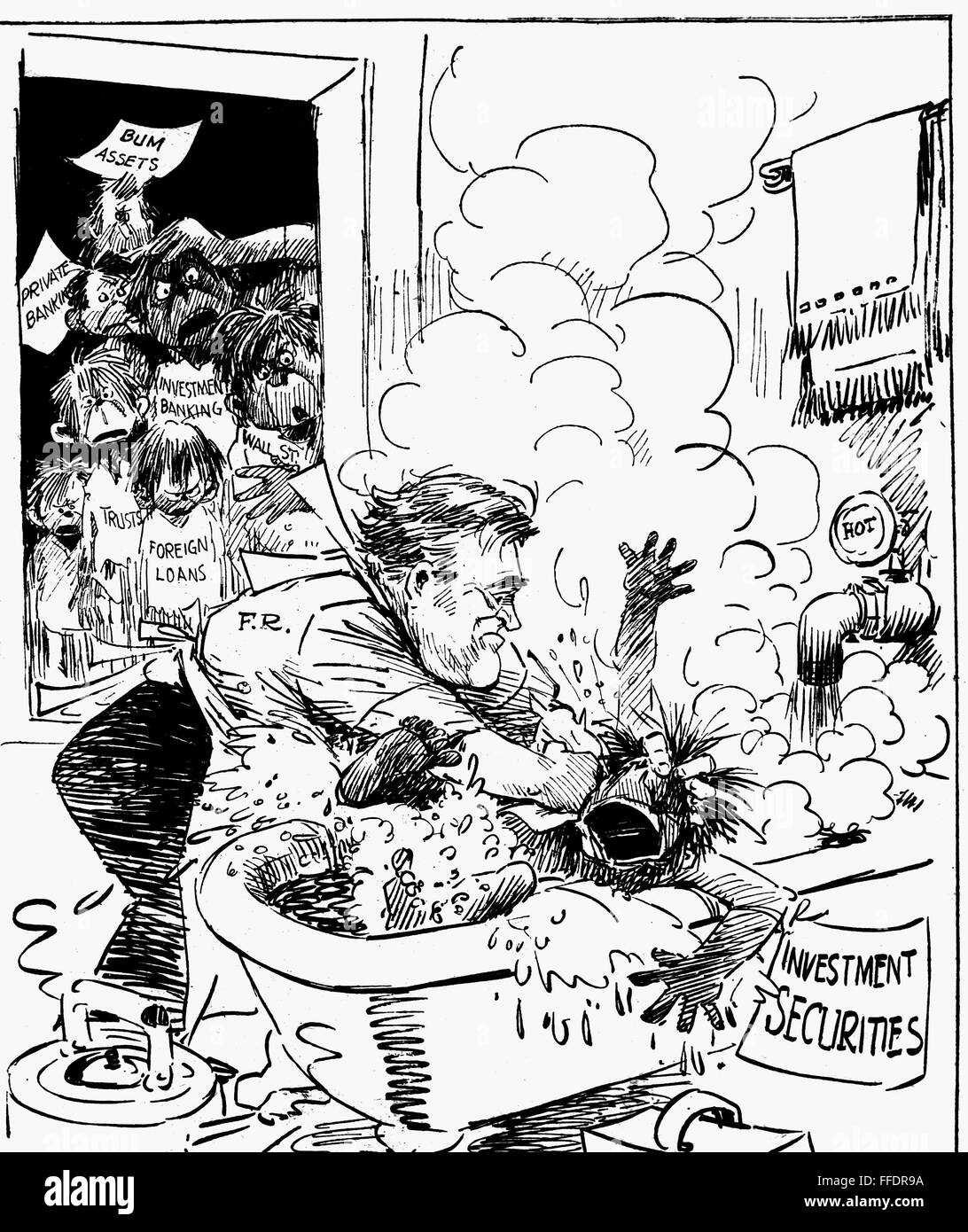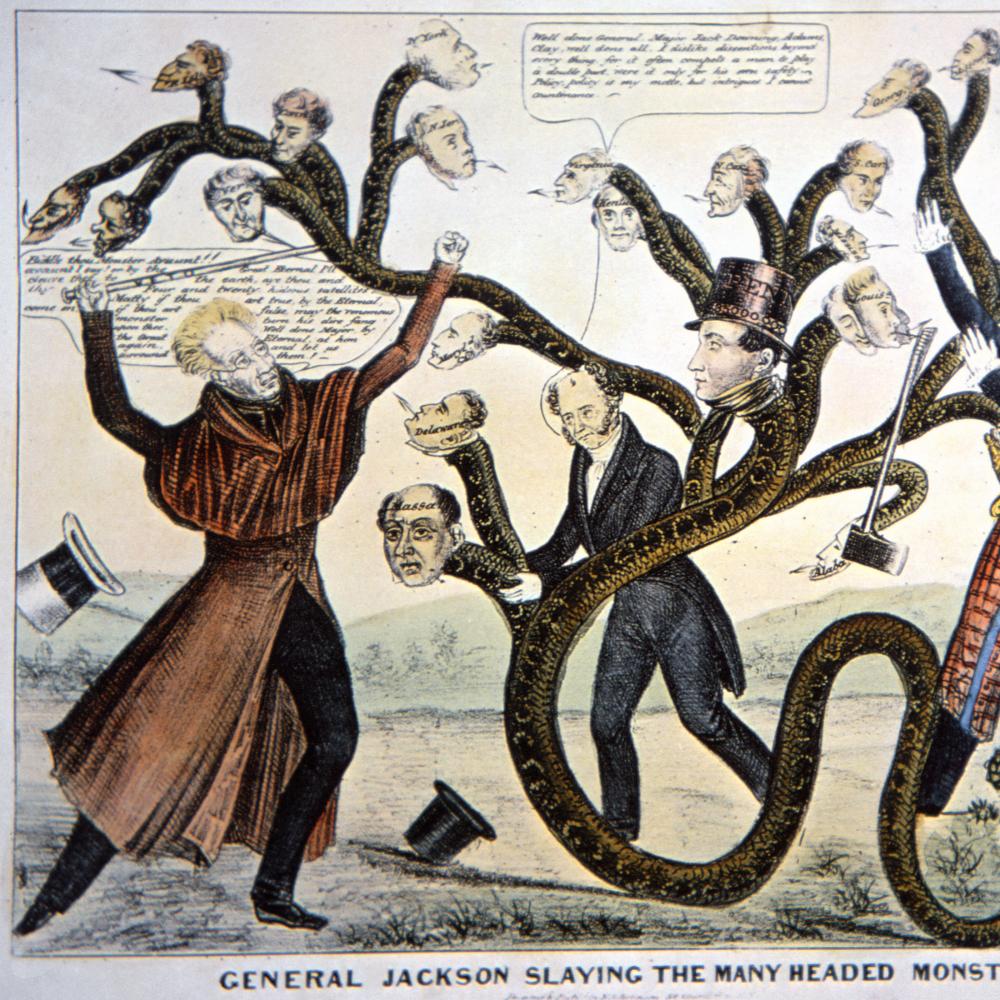banking Act Political Cartoons: A Visual Commentary on Economic and Political Power
Political cartoons, with their potent blend of satire and symbolism, have served as a powerful tool for expressing public opinion and critiquing political and economic policies for centuries. In the realm of banking legislation, cartoons have played a particularly significant role, visually capturing the complexities of financial systems and the often-contentious debates surrounding their regulation. This essay will explore the historical significance of banking act political cartoons, analyzing their evolution, key themes, and impact on public discourse.
The early 19th century witnessed a surge in political cartoons depicting the rise and fall of the Second Bank of the United States. This powerful institution, chartered in 1816, aimed to stabilize the nation’s currency and foster economic growth. However, it quickly became a lightning rod for controversy, with critics arguing that it concentrated too much power in the hands of a private entity and favored the wealthy elite.

Cartoons of this era often portrayed the bank as a monstrous serpent, its tentacles reaching into every corner of American life. President Andrew Jackson, a vocal opponent of the bank, was frequently depicted as a heroic figure battling this leviathan. One famous cartoon, “The Hydra of the Bank,” depicted the bank as a multi-headed monster, symbolizing its perceived influence over various sectors of society. These cartoons effectively mobilized public opinion against the bank, contributing to its eventual demise in 1836.
The demise of the Second Bank of the United States ushered in an era of “wildcat banking,” characterized by the proliferation of poorly regulated state banks. These banks often issued banknotes of questionable value, leading to widespread economic instability and periodic financial panics.
Cartoons of this period often satirized the reckless practices of these banks, depicting them as gambling dens or houses of ill repute. One famous cartoon, “The Bank of Speculation,” depicted a bank president as a gambler, throwing dice while the bank itself crumbled into ruins. These cartoons served as a powerful warning about the dangers of unregulated banking and the need for stronger federal oversight.

The late 19th century witnessed the rise of powerful industrialists and the emergence of large, consolidated corporations. This era, often referred to as the Gilded Age, also saw the rise of powerful banking interests, such as J.P. Morgan and John D. Rockefeller.
Cartoons of this period often depicted these titans of finance as ruthless monopolists, controlling vast fortunes and wielding undue influence over government policy. One famous cartoon, “The Octopus,” depicted a giant octopus with tentacles reaching into various sectors of the economy, symbolizing the perceived stranglehold of big business and finance. These cartoons helped to fuel the growing movement for greater government regulation of corporations and the financial system.
The Progressive Era, spanning the late 19th and early 20th centuries, witnessed a wave of reform movements aimed at addressing the social and economic ills of industrialization. Banking reform was a key part of this agenda, with reformers advocating for measures such as the creation of a central bank and the regulation of banking practices.
Cartoons of this era often depicted the need for banking reform, portraying the existing system as chaotic and prone to crises. One famous cartoon, “The Money Trust,” depicted a group of powerful bankers as a cabal controlling the nation’s finances. These cartoons helped to build public support for reforms such as the Federal Reserve Act of 1913, which established the Federal Reserve System, the central banking system of the United States.
The Great Depression, which began in 1929, was a period of unprecedented economic hardship. The widespread bank failures that occurred during this period shattered public confidence in the banking system and led to calls for sweeping reforms.
Cartoons of this era often depicted the devastating impact of the Depression, portraying bank failures as a national tragedy. One famous cartoon, “The Run on the Bank,” depicted panicked depositors rushing to withdraw their funds, while bank employees looked on helplessly. These cartoons helped to build public support for the New Deal reforms, including the creation of the Federal Deposit Insurance Corporation (FDIC), which insures bank deposits and helps to prevent bank runs.
The post-World War II era witnessed a surge in consumer credit, with the rise of credit cards and other forms of consumer debt. This period also saw the growth of the banking sector, with the emergence of new financial products and services.
Cartoons of this era often satirized the allure and dangers of consumer credit, depicting consumers as being lured into debt by seductive advertising. One famous cartoon, “The Credit Card Jungle,” depicted consumers as being lost in a maze of debt, struggling to escape the clutches of credit card companies. These cartoons served as a cautionary tale about the potential pitfalls of excessive consumer debt.
The late 20th and early 21st centuries witnessed the rise of globalization, with the increasing interconnectedness of global financial markets. This period also saw the deregulation of the financial system, leading to the emergence of new and complex financial instruments.
The 2008 financial crisis, triggered by the collapse of the housing market and the failure of major financial institutions, exposed the vulnerabilities of the deregulated financial system. Cartoons of this era often depicted the crisis as a result of greed and reckless speculation, portraying bankers as villains who had brought the global economy to the brink of collapse. One famous cartoon, “The House of Cards,” depicted the global financial system as a precarious house of cards, ready to crumble at any moment. These cartoons helped to fuel public anger and demand for stricter regulation of the financial system.
In the contemporary era, banking act political cartoons continue to play a vital role in shaping public discourse. Issues such as income inequality, the rise of fintech, and the increasing role of technology in finance are all subjects of ongoing debate and are frequently depicted in contemporary cartoons.
For example, cartoons may satirize the growing power of tech giants in the financial sector, depicting them as monopolistic entities that threaten to disrupt traditional banking. Other cartoons may address the challenges of regulating cryptocurrencies and other forms of digital finance.
As the financial landscape continues to evolve, so too will the role of political cartoons in shaping public understanding and debate. By visually capturing the complexities of the financial system and the human impact of economic policies, cartoons can serve as a powerful tool for informing and engaging the public on critical issues.
In conclusion, banking act political cartoons have a long and rich history, providing a unique and often-provocative commentary on the evolution of the financial system and the political battles surrounding its regulation. From the early days of the Second Bank of the United States to the challenges of the 21st century, cartoons have served as a vital tool for expressing public opinion, critiquing power, and shaping public discourse. As the financial landscape continues to evolve, it is likely that political cartoons will remain an important source of commentary and a powerful tool for engaging the public on critical issues.
banking act political cartoon

